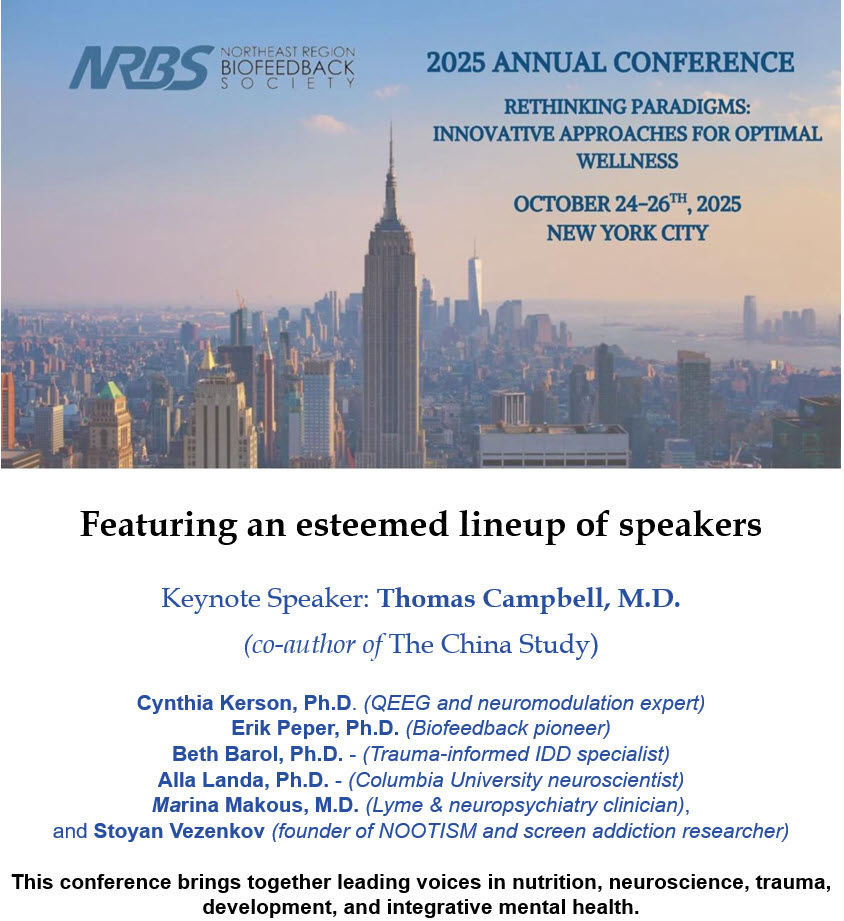A Second Look: Schachter and Singer's Two-Factor Theory of Emotion
- Fred Shaffer
- Aug 9
- 9 min read

Abstract
Schachter and Singer’s two‑factor theory—emotion as the marriage of bodily arousal and a context‑driven label—was revolutionary because it put meaning-making at the heart of feeling.
But six decades later, evidence shows the body’s “arousal” isn’t as generic as the theory assumed, the brain’s rapid salience detectors can trigger feelings before we consciously label them, and culture, language, and learning shape emotion far more than the model allowed.
Replication issues in the classic epinephrine studies haven’t helped. The modern picture is a loop, not a ladder: appraisals sculpt bodily states while interoceptive signals reshape appraisal in real time. In other words, Schachter was right that context counts—but wrong that emotion is simply “arousal + label” pasted onto a blank physiological canvas.
The Theory That Electrified Psychology—But Missed the Wiring
When Schachter and Singer proposed in 1962 that emotions emerge when undifferentiated bodily arousal gets cognitively labeled by situational cues, they offered a cinematic twist: your pounding heart after a near‑collision or a first date is just raw voltage; the mind’s caption—“fear,” “excitement,” “love”—does the storytelling (Schachter & Singer, 1962). That claim democratized emotion, giving interpretation center stage. Yet the elegance of the idea concealed a wiring diagram that doesn’t match today’s data.
Autonomic patterns aren’t a single blur; they vary with emotion and context. Meanwhile, the brain can launch a feeling before the “labeling department” finishes its paperwork.
And the cultural script you learned as a child influences which emotion word you reach for at all (Adolphs, 2010; Kreibig, 2010; LeDoux, 2000; Mesquita & Walker, 2003). The result is less a headline—“Arousal + Label = Emotion”—and more a newsroom of interacting desks, each filing copy at its own pace while the story keeps changing on deadline.
Your Body Is Not a Blank Canvas
Two‑factor theory leans on the idea that bodily arousal is largely nonspecific, so the same physiological soup can be ladled into different emotional bowls. That’s a powerful metaphor, but the soup has ingredients.
Studies sampling heart rate, blood pressure, peripheral vasomotor tone, and facial muscle activity show that fear, anger, disgust, and sadness often carry partially distinct autonomic fingerprints, even if no single measure perfectly diagnoses a state (Kreibig, 2010; Levenson, Ekman, & Friesen, 1990).
Think of it less like one dimmer switch and more like a mixing board: channels for cardiac output, skin conductance, breathing pattern, and facial musculature slide in coordinated but emotion‑sensitive ways. This isn’t to say the physiology is always crisp; under naturalistic conditions, patterns overlap. But overlap is not uniformity.
By assuming undifferentiated arousal, the two‑factor account dulled an important clue source—the body’s own hints about what we’re feeling (Kreibig, 2010; Levenson et al., 1990). That matters for everything from lie detection debacles to clinical interventions that depend on reading interoceptive signals accurately.
Feelings at the Speed of Lightning
The theory also implies that you must interpret arousal to experience an emotion. Neuroscience says sometimes the feeling drives first. Swift, subcortical routes from the thalamus to the amygdala allow the brain to flag biologically significant cues with breathtaking speed, supporting orienting, startle, and visceral shifts before conscious labeling gets a word in (LeDoux, 2000).
And crucially, the amygdala isn’t a “fear center” so much as a salience detector that prioritizes responses to threats and reinforcers—a relevance engine that shouts, “Pay attention now!” (Adolphs, 2010).
That pre‑label surge can be the emotion. Only afterward do we assemble a narrative that may—or may not—capture why our palms were sweating.
The upshot isn’t that cognition is irrelevant; it’s that cognition is only one voice in a fast, parallel choir, sometimes harmonizing with, sometimes correcting, the brain’s snap judgments (Adolphs, 2010; LeDoux, 2000; Zajonc, 1980).
The Loop, Not the Ladder
Schachter’s implied sequence—body first, label second—misses the bidirectional dance. Appraisals alter the body, and bodily signals reshape appraisals in a tight, ongoing loop.
Damasio argued that emotions are patterns of bodily change represented in brain maps; those maps feed forward into feeling and decision (Damasio, 1994). Interoception—the sense of the body’s internal state via insular and cingulate networks—supplies a continuous stream of affective evidence that the brain uses to predict and regulate what comes next (Craig, 2002; Critchley, Wiens, Rotshtein, Öhman, & Dolan, 2004).
Picture a thermostat that doesn’t just react to temperature, but anticipates a cold front and tweaks the furnace before you shiver. That predictive, circular architecture resists neat arrows. Emotions emerge from the conversation, not a single turn of speech (Barrett, 2017; Craig, 2002; Critchley et al., 2004; Damasio, 1994).
When Arousal Isn’t the Main Character
Two‑factor theory makes arousal the star, yet daily life is packed with low‑arousal emotions—contentment, melancholy, the quiet pride of finishing a hard task—that don’t register as a pounding heart or trembling hands.
Circumplex models show that affect varies continuously along at least two dimensions, valence (pleasant to unpleasant) and arousal (activated to deactivated), with many real feelings living in the low‑arousal neighborhoods (Russell, 1980).
Appraisal theories likewise foreground meaning—goal relevance, blame, coping potential—over sheer autonomic oomph (Lazarus, 1991; Scherer, 2009). When arousal drops out of the frame, two‑factor theory struggles to explain how we nonetheless know what we feel.
The answer from modern accounts is that a constantly updated “core affect” provides the canvas, and cognitive appraisal supplies the scene, without requiring a thumping physiological drum solo to kick things off (Barrett, 2017; Russell, 1980; Scherer, 2009).
Culture Writes the Caption
If emotion were simply arousal plus a situation label, we might expect labels to be interchangeable across cultures. They aren’t. Language carves the affective world differently, and cultural practices train attention on certain bodily and social cues while muting others.
People in different cultural contexts literally learn different emotion categories, which shapes both what they report and how they regulate (Mesquita & Walker, 2003).
A Western “anxiety” episode might be narrated elsewhere as social shame, spiritual imbalance, or even a stomach‑centered malaise.
Constructionist views make this variability a feature, not a bug: emotions are situated concepts assembled on the fly from core affect, interoception, and culturally learned categories (Barrett, 2017; Mesquita & Walker, 2003).
Two‑factor theory nods at context, but it doesn’t explain how culture scaffolds the very concepts that make labeling possible.
The Shaky Scaffold: Replications and Misattribution
Textbook fame for two‑factor theory rides on dramatic demonstrations of “misattribution of arousal,” from epinephrine‑injected participants catching euphoria from a confederate to the infamous wobbly‑bridge study where fear amped attraction (Dutton & Aron, 1974; Schachter & Singer, 1962). But when researchers tried to replicate core pieces, results were messy.
Methodological critiques flagged small samples, heavy deception, weak manipulation checks, and ambiguous measures, and several follow‑ups failed to reproduce the original effects or found them bounded by narrow conditions (Marshall & Zimbardo, 1979; Reisenzein, 1983).
The bridge effect is clever and intuitive, yet its punch depends on precise timing and context; it’s not a universal lever you can pull in any lab corridor.
None of this erases the phenomenon—context can and does shape what we feel—but it does deflate the claim that arousal is typically “free floating” until thoughts tack on meaning (Dutton & Aron, 1974; Marshall & Zimbardo, 1979; Reisenzein, 1983).
What the Two-Factor Theory Absolutely Nailed—and Why That Still Matters
For all its cracks, two‑factor theory planted a flag on a hill we still defend: meaning matters. Reappraisal can rewrite experience; a racing heart before a talk can be fear or readiness, and that reinterpretation changes performance and physiology (Lazarus, 1991). The insight that situations and cognitions bend feeling remains the beating heart of modern emotion science and clinical practice. What’s different today is the supporting cast.
Constructionist and appraisal models embed meaning in a broader architecture of core affect, interoceptive prediction, and cultural learning, while neuroscience shows how fast, subcortical salience systems launch responses the mind then explains (Adolphs, 2010; Barrett, 2017; LeDoux, 2000; Scherer, 2009).
In that bigger picture, Schachter & Singer aren’t wrong so much as incomplete—a crucial chapter in a story whose ending keeps getting rewritten.
The Bottom Line: From Equation to Ecosystem
The modern takeaway is simple and radical: emotion isn’t an equation, it’s an ecosystem.
Bodily signals carry structured information more often than not. The brain’s salience detectors kick in at reflex speed. Appraisals sculpt what we’re ready to feel next. Culture provides the vocabulary. And yes, sometimes we mistake adrenaline for attraction.
Two‑factor theory broke the spell of biological determinism by putting context on the stage; contemporary science keeps the spotlight there while widening the frame to include loops, predictions, and learning (Adolphs, 2010; Barrett, 2017; Kreibig, 2010; LeDoux, 2000; Mesquita & Walker, 2003; Russell, 1980; Scherer, 2009; Schachter & Singer, 1962).
Key Takeaways
The “generic arousal” premise doesn’t hold up: different emotions often show partly distinct autonomic patterns, so the body isn’t a blank physiological canvas awaiting a label.
Feelings can ignite before conscious labeling: fast subcortical routes (notably the amygdala) flag salient threats and reinforcers at reflex speed, so labeling isn’t always the gatekeeper to emotion.
Arousal isn’t always center stage: low‑arousal states (e.g., contentment) and appraisal of meaning and goals explain a lot of everyday emotion that two‑factor theory struggles to capture.
Emotion is a loop, not a ladder: interoceptive signals and cognitive appraisals continuously co‑shape one another, yielding bidirectional brain–body dynamics.
The evidence is bounded: the classic misattribution effects are context‑sensitive and hard to replicate consistently, and cultural/linguistic learning shapes how arousal is labeled.




Glossary
affect: a basic, continuously varying feeling state characterized by valence (pleasant–unpleasant) and arousal (activated–deactivated) that underlies more specific emotions.
amygdala: a subcortical hub that functions as a salience detector, prioritizing responses to threats and reinforcers rather than serving as a simple “fear center.”
appraisal: a set of rapid evaluations about what a situation means for one’s goals, coping options, and norms, shaping which emotion is constructed.
arousal (autonomic): a state of physiological activation (e.g., cardiac, vasomotor, sweating) that varies in pattern across emotions rather than being wholly undifferentiated.
autonomic nervous system (ANS): a peripheral system (sympathetic and parasympathetic branches) regulating involuntary functions and generating many measurable emotion‑linked changes.
circumplex model: a map of affect in a circular space defined by valence and arousal, locating emotions by their blend of pleasantness and activation.
constructionist theory of emotion: an account proposing that emotions are assembled on the fly from core affect, interoceptive predictions, and learned emotion concepts.
core affect: a continuously available, integrated feeling of valence and arousal that provides the raw material for constructing specific emotions.
interoception: the sensing and representation of the body’s internal state (e.g., heart, lungs, viscera) that informs feeling and regulation.
interoceptive awareness: a metacognitive capacity to notice and interpret internal bodily signals, linked to differences in emotion experience and regulation.
misattribution of arousal: the process by which unexplained bodily activation is assigned to an incorrect source, altering the reported emotion.
salience: the brain’s computation of what is most behaviorally relevant right now, boosting processing for potential threats or rewards.
somatic marker hypothesis: the idea that stored bodily‑state “markers” bias decision‑making by signaling the value of options before full deliberation.
two‑factor theory of emotion: the proposal that emotion results from physiological arousal plus a cognitive label derived from context.
valence: the hedonic dimension of affect, indicating how pleasant or unpleasant an experience feels.
Zajonc primacy: the claim that affective reactions can occur without, or prior to, conscious cognitive inferences (“preferences need no inferences”).
References
Adolphs, R. (2010). What does the amygdala contribute to social cognition? Annals of the New York Academy of Sciences, 1191(1), 42–61. https://doi.org/10.1111/j.1749-6632.2010.05445.x
Barrett, L. F. (2017). How emotions are made: The secret life of the brain. Houghton Mifflin Harcourt.
Craig, A. D. (2002). How do you feel? Interoception: The sense of the physiological condition of the body. Nature Reviews Neuroscience, 3(8), 655–666. https://doi.org/10.1038/nrn894
Critchley, H. D., Wiens, S., Rotshtein, P., Öhman, A., & Dolan, R. J. (2004). Neural systems supporting interoceptive awareness. Nature Neuroscience, 7(2), 189–195. https://doi.org/10.1038/nn1176
Damasio, A. R. (1994). Descartes’ error: Emotion, reason, and the human brain. G. P. Putnam’s Sons.
Dutton, D. G., & Aron, A. P. (1974). Some evidence for heightened sexual attraction under conditions of high anxiety. Journal of Personality and Social Psychology, 30(4), 510–517. https://doi.org/10.1037/h0037031
Kreibig, S. D. (2010). Autonomic nervous system activity in emotion: A review. Biological Psychology, 84(3), 394–421. https://doi.org/10.1016/j.biopsycho.2010.03.010
Lazarus, R. S. (1991). Emotion and adaptation. Oxford University Press.
LeDoux, J. E. (2000). Emotion circuits in the brain. Annual Review of Neuroscience, 23, 155–184. https://doi.org/10.1146/annurev.neuro.23.1.155
Levenson, R. W., Ekman, P., & Friesen, W. V. (1990). Voluntary facial action generates emotion-specific autonomic nervous system activity. Psychophysiology, 27(4), 363–384. https://doi.org/10.1111/j.1469-8986.1990.tb02330.x
Marshall, J. R., & Zimbardo, P. G. (1979). Affective consequences of inadequately explained physiological arousal. Journal of Personality and Social Psychology, 37(6), 970–988. https://doi.org/10.1037/0022-3514.37.6.970
Mesquita, B., & Walker, R. (2003). Cultural differences in emotions: A context for interpreting emotional experiences. Behaviour Research and Therapy, 41(7), 777–793. https://doi.org/10.1016/S0005-7967(02)00189-4
Reisenzein, R. (1983). The Schachter theory of emotion: Two decades later. Psychological Bulletin, 94(2), 239–264. https://doi.org/10.1037/0033-2909.94.2.239
Russell, J. A. (1980). A circumplex model of affect. Journal of Personality and Social Psychology, 39(6), 1161–1178. https://doi.org/10.1037/h0077714
Schachter, S., & Singer, J. E. (1962). Cognitive, social, and physiological determinants of emotional state. Psychological Review, 69(5), 379–399. https://doi.org/10.1037/h0046234
Scherer, K. R. (2009). The dynamic architecture of emotion: Evidence for the component process model. Cognition and Emotion, 23(7), 1307–1351. https://doi.org/10.1080/02699930902928969
Zajonc, R. B. (1980). Feeling and thinking: Preferences need no inferences. American Psychologist, 35(2), 151–175. https://doi.org/10.1037/0003-066X.35.2.151
About the Author

Fred Shaffer earned his PhD in Psychology from Oklahoma State University. He earned BCIA certifications in Biofeedback and HRV Biofeedback. Fred is an Allen Fellow and Professor of Psychology at Truman State University, where has has taught for 50 years. He is a Biological Psychologist who consults and lectures in heart rate variability biofeedback, Physiological Psychology, and Psychopharmacology. Fred helped to edit Evidence-Based Practice in Biofeedback and Neurofeedback (3rd and 4th eds.) and helped to maintain BCIA's certification programs.
Support Our Friends









Comments